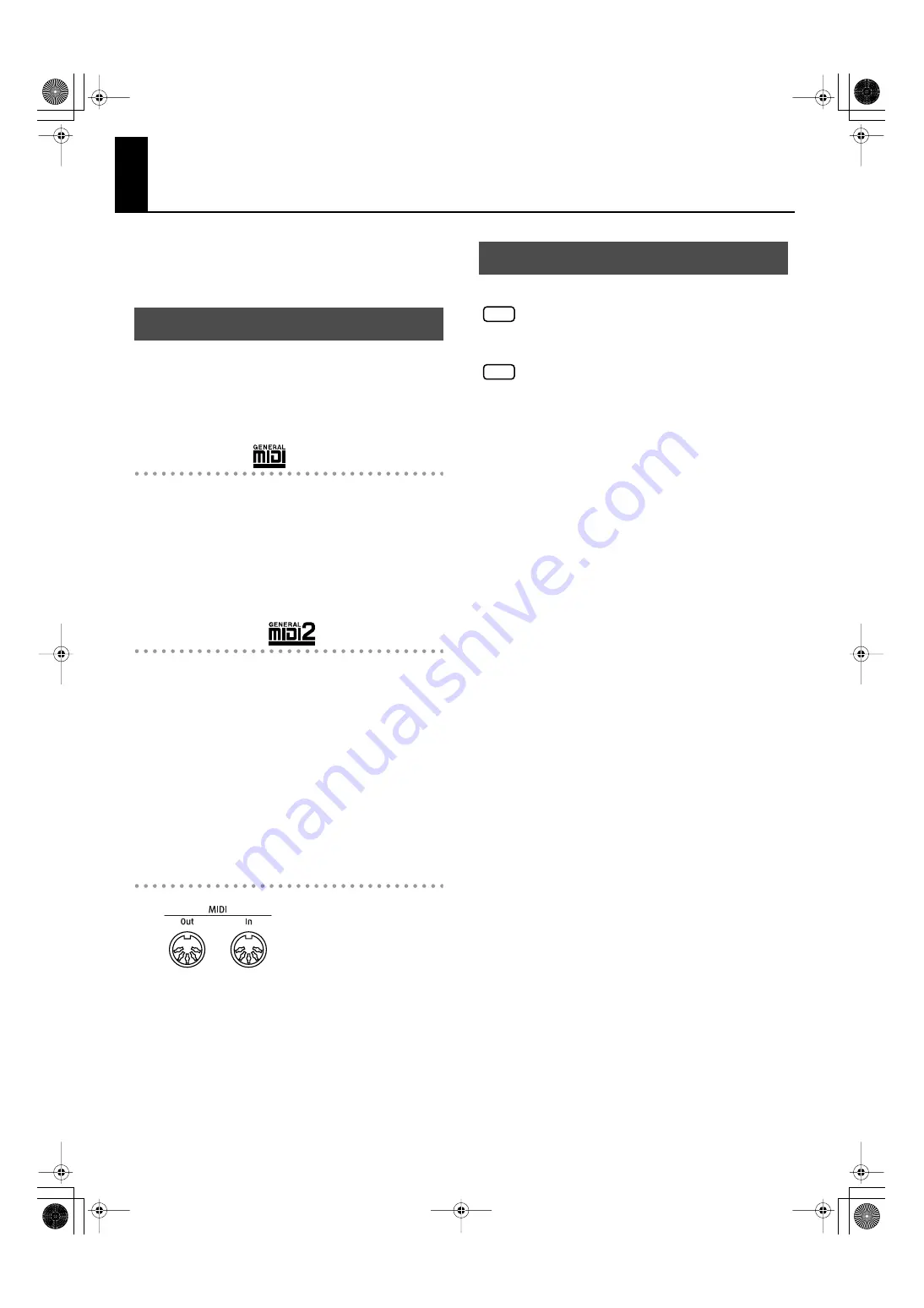
99
Connecting to MIDI Devices
The FP-4 provides MIDI connectors so that performance data
can be transferred between it and other devices. By using
these connectors to connect other devices with the FP-4, you
can take advantage of a wide range of possibilities.
“MIDI” stands for “Musical Instrument Digital Interface.” It is a
universal standard that allows performance data to be
exchanged among electronic musical instruments and computers.
The FP-4 contains a General MIDI 2 compatible sound
generator.
General MIDI
The General MIDI is a set of recommendations which seeks to
provide a way to go beyond the limitations of proprietary
designs, and standardize the MIDI capabilities of sound
generating devices. Sound generating devices and music files
that meets the General MIDI standard bears the General MIDI
logo. Music files bearing the General MIDI logo can be
played back using any General MIDI sound generating unit to
produce essentially the same musical performance.
General MIDI 2
The upwardly compatible General MIDI 2 recommendations pick
up where the original General MIDI left off, offering enhanced
expressive capabilities, and even greater compatibility. Issues that
were not covered by the original General MIDI recommendations,
such as how sounds are to be edited, and how effects should be
handled, have now been precisely defined. Moreover, the
available sounds have been expanded. General MIDI 2 compliant
sound generators are capable of reliably playing back music files
that carry either the General MIDI or General MIDI 2 logo.
In some cases, the conventional form of General MIDI, which does
not include the new enhancements, is referred to as “General
MIDI 1” as a way of distinguishing it from General MIDI 2.
Connectors
fig.cnct-midi1.eps
MIDI Out Connector
Sends data about what is being played on the keyboard and
other performance data.
Connect to the MIDI In connector on the external MIDI device.
MIDI In Connector
Receives messages sent from external MIDI devices.
Connect to the MIDI Out connector on the external MIDI
device.
To prevent malfunction and/or damage to speakers
or other devices, always turn down the volume, and
turn off the power on all devices before making any
connections.
MIDI cables are not included. Consult your Roland
dealer if you need to purchase.
1.
Turn the volume all the way down on the FP-4
and the device you’re about to connect.
2.
Turn off the power to the FP-4 and the device
being connected.
3.
Connect a MIDI cable (sold separately)
between the MIDI connectors on each device.
4.
Switch on the power to the FP-4 and the
connected device.
5.
Adjust the volume level on the FP-4 and the
connected device.
6.
You should also set the MIDI settings as
needed.
You may need to set things such as the MIDI transmit
channel (p. 100) and the Local on/off setting (p. 101).
What’s MIDI?
Making the Connections
NOTE
NOTE
FP-4-e.book 99 ページ 2007年5月24日 木曜日 午後7時10分
Summary of Contents for FP-4
Page 1: ...07 06 4N 04453567 DIC 90 0 4 4 5 3 5 6 7 0 4 ...
Page 2: ...Cover1 4 ...
Page 135: ...135 MEMO FP 4 e book 135 ページ 2007年5月24日 木曜日 午後7時10分 ...
Page 139: ...Cover1 4 ...
Page 140: ...07 06 4N 04453567 DIC 90 0 4 4 5 3 5 6 7 0 4 ...
















































